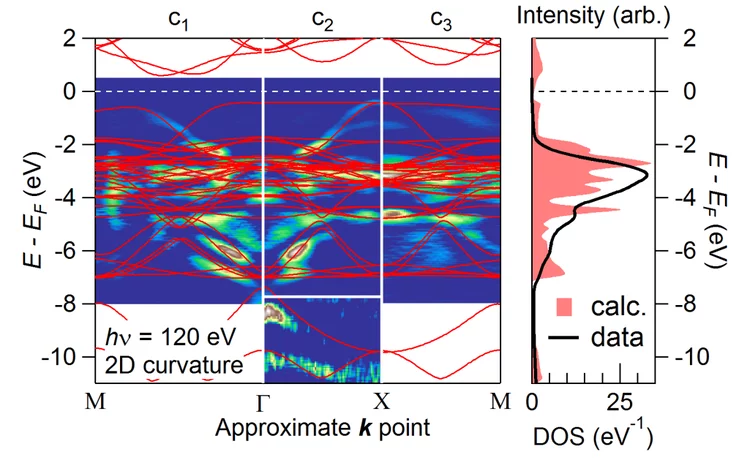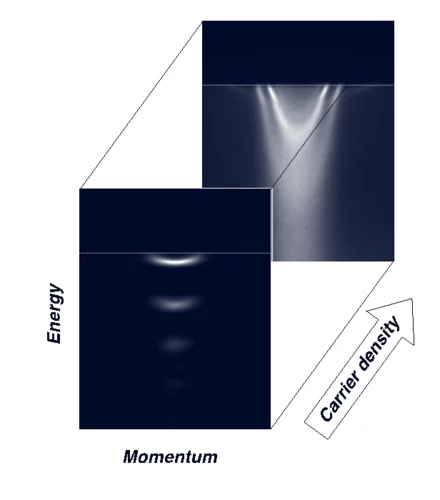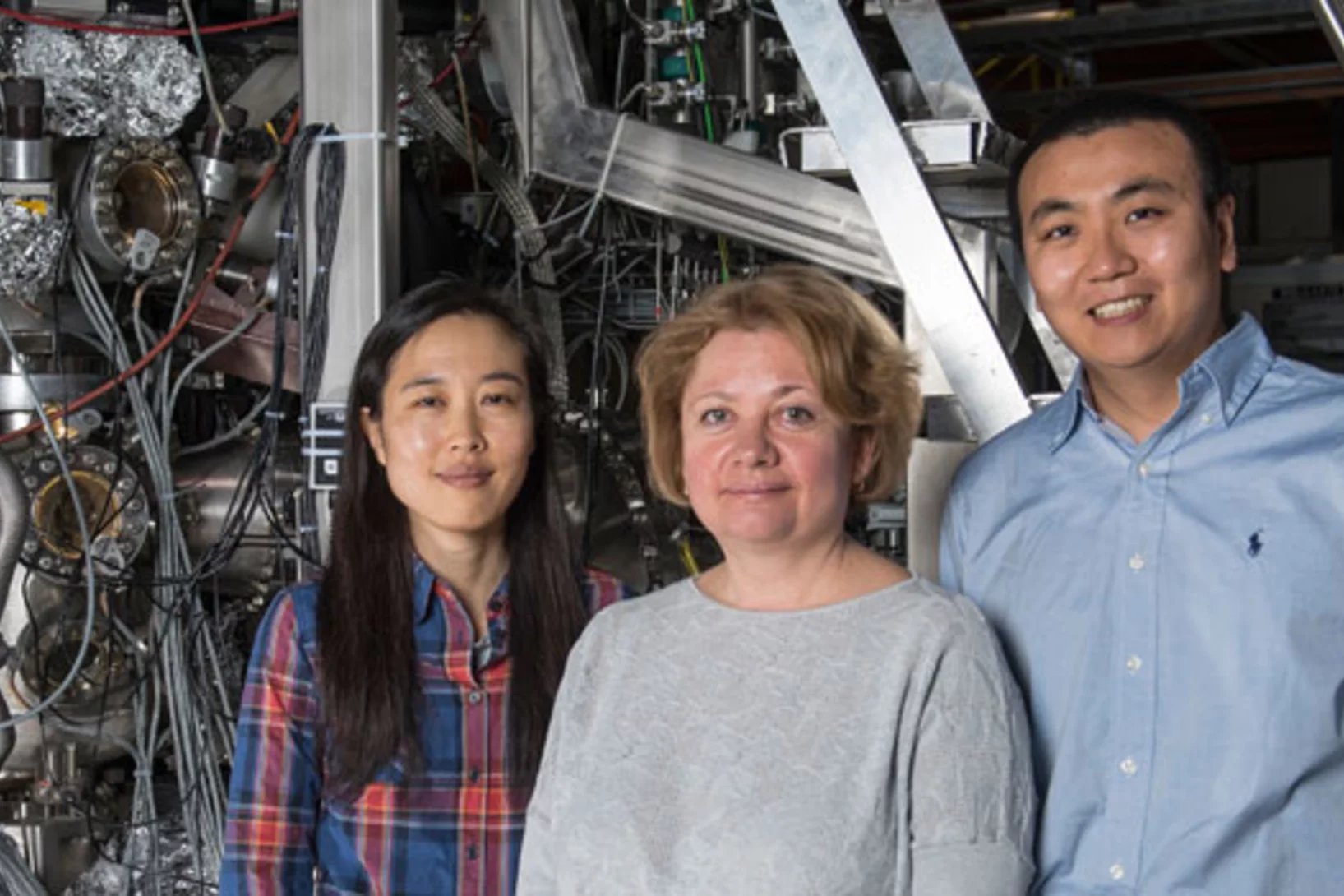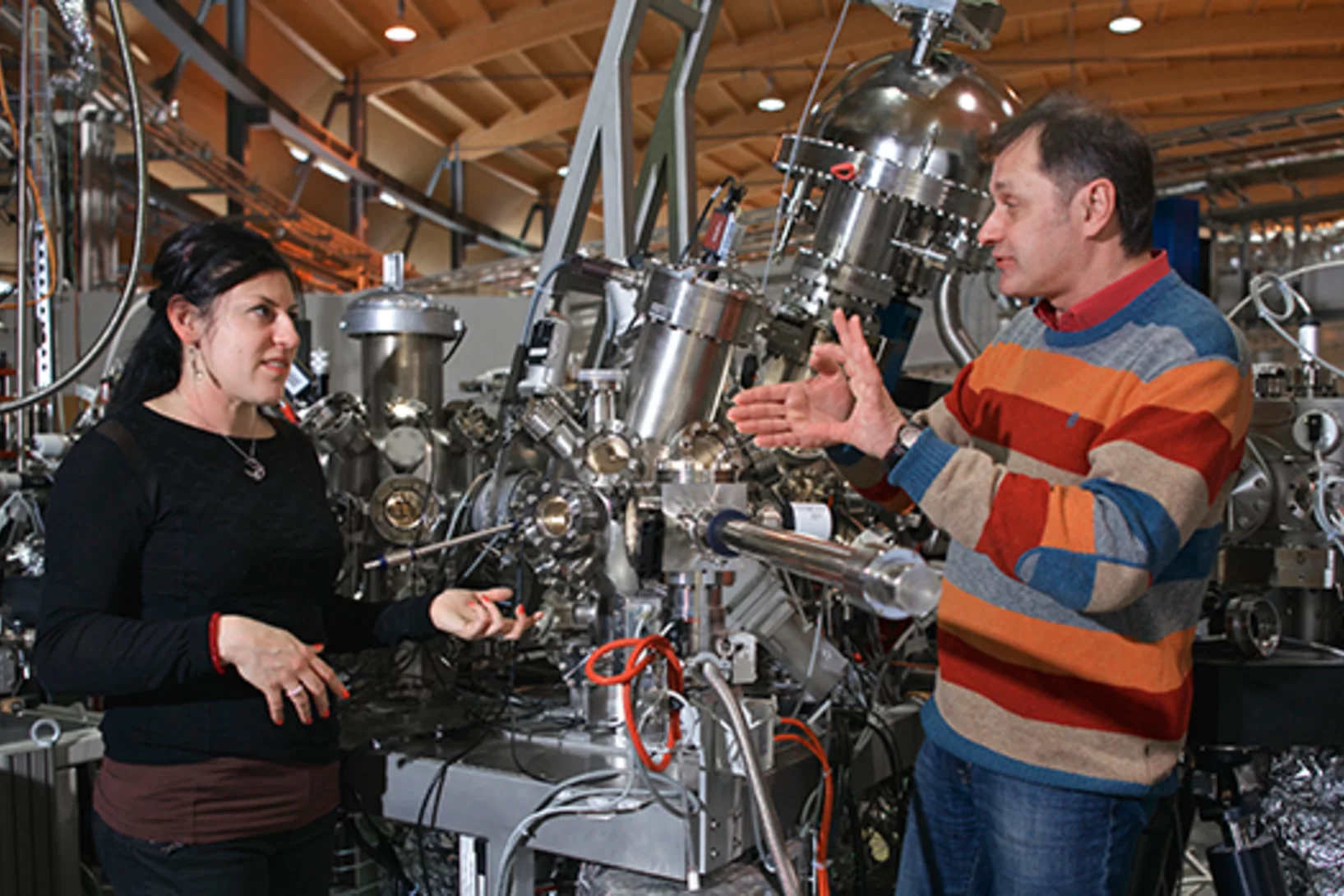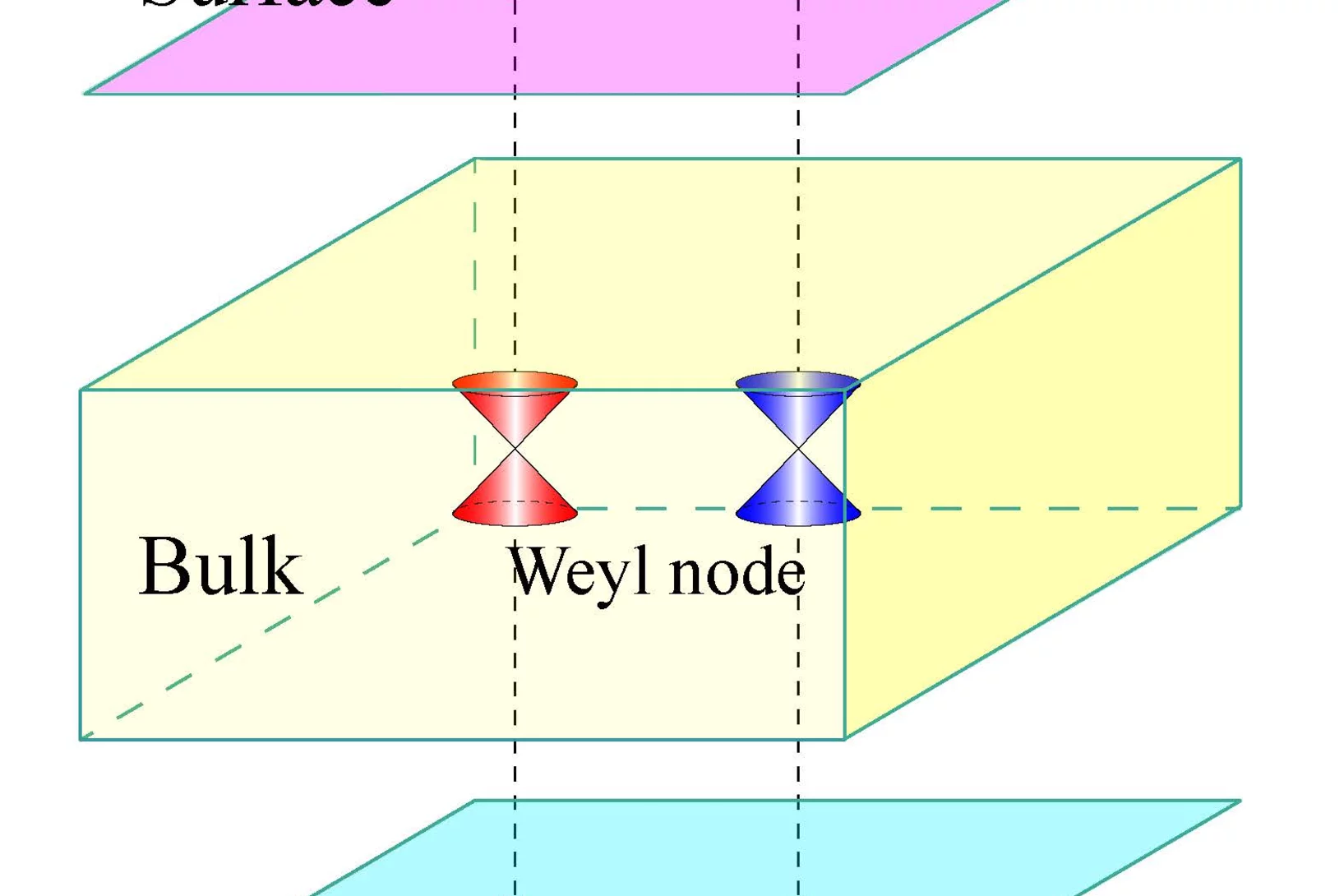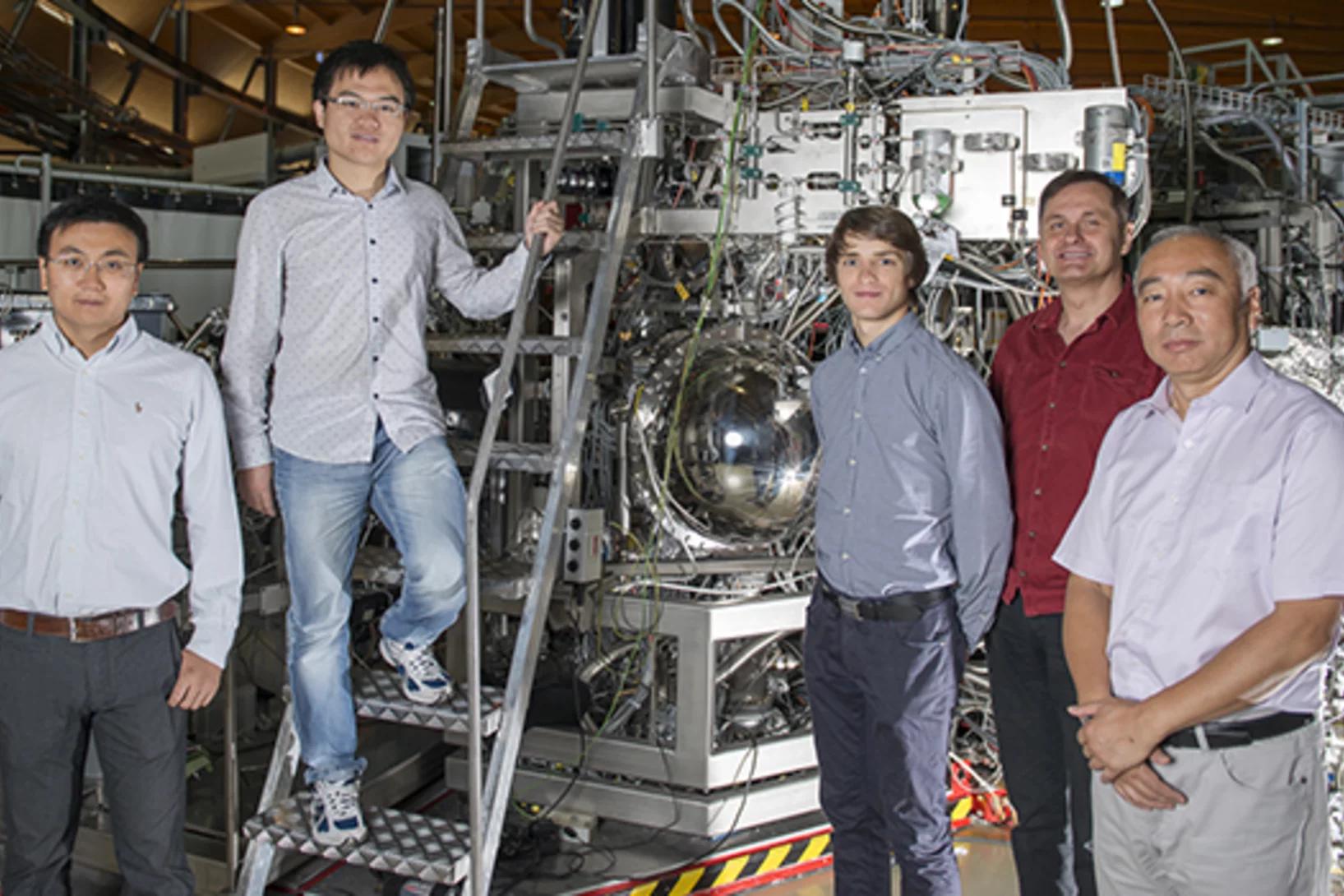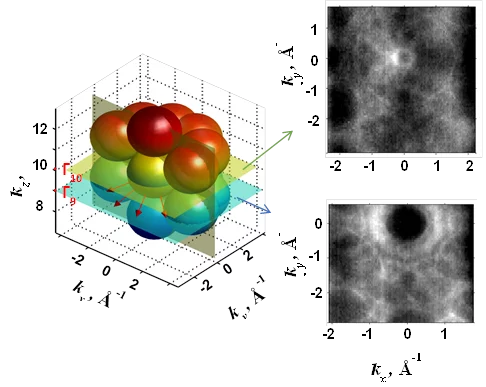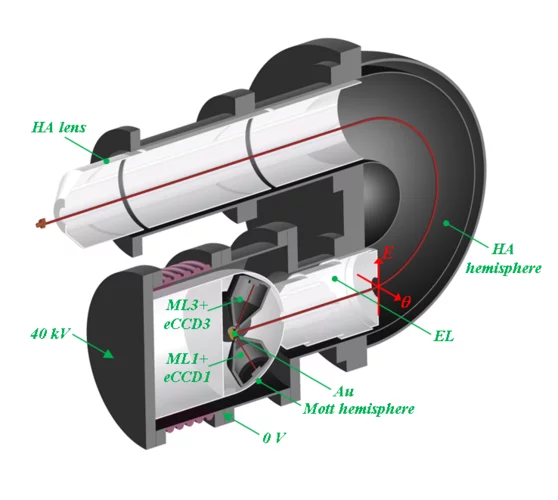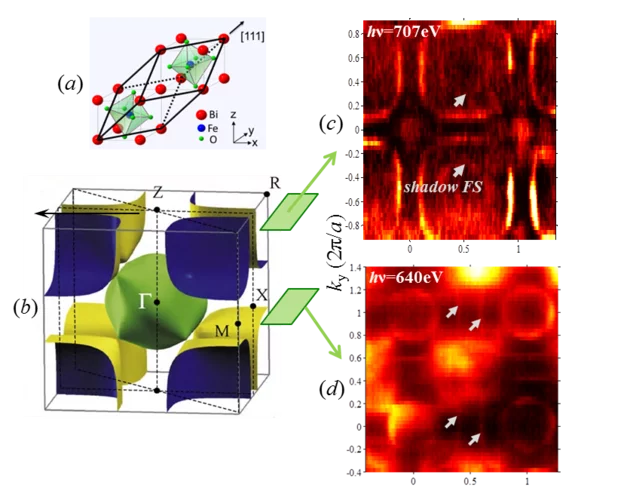Shedding light on the origins of high-Tc superconductivity in bismuth oxides
Researchers have overcome a number of challenges in order to employ an advanced probe in the study of an unusual material, barium bismuth oxide (BaBiO3) – an insulating parent compound of a family of high-temperature superconductors known since the late 80s. In order to finally realize the experiments, the researchers grew and studied thin films of the material completely in situ under ultrahigh vacuum conditions. The results show that superconductivity in bismuth oxides emerges out of a novel insulating phase, where hole pairs located on combinations of the oxygen orbitals are coupled with distortions of the crystal lattice.
Tailoring Novel Superconductivity
The Angle Resolved Photoemission Spectroscopy (ARPES) measurements performed on 2DEL at STO surface revealed that, at low carrier density, electrons are always accompanied by a quantized dynamic lattice deformation. Together with the electron, these phonon-cloud formed a new composite quasiparticle called Fröhlich polaron.
Neues Teilchen könnte Grundlage energiesparender Elektronik bilden
Das erst im vergangenen Jahr entdeckte Weyl-Fermion bewegt sich in Materialien praktisch ohne Widerstand. Nun zeigen Forscher einen Weg, wie man es in elektronischen Bauteilen einsetzen könnte.
Schwerfälliger Stromfluss könnte Weg zu energiesparenden Computern weisen
Computer und andere elektronische Geräte haben heute einen beträchtlichen Anteil am weltweiten Energieverbrauch. Mit den heute genutzten Technologien lässt sich dieser Verbrauch aber kaum senken, sodass die Chips in den energiesparenden Geräten der Zukunft aus neuartigen Materialien bestehen werden. Neueste Forschungsergebnisse aus dem Paul Scherrer Institut PSI geben Hinweise darauf, wie man zu solchen Materialien kommen könnte.
Observation of Fermi-Arc Spin Texture in TaAs
The study of nontrivial topological semimetals (TSM) is an emerging subject, providing a new frontier in topological aspects beyond insulators. Here, we have investigated the spin texture of surface Fermi arcs in the recently discovered Weyl semimetal TaAs using spin- and angle-resolved photoemission spectroscopy. The experimental results demonstrate that the Fermi arcs are spin polarized. The measured spin texture fulfills the requirement of mirror and time-reversal symmetries and is well reproduced by our first-principles calculations, which gives strong evidence for the topologically nontrivial Weyl semimetal state in TaAs. The consistency between the experimental and calculated results further confirms the distribution of chirality of the Weyl nodes determined by first principles calculations.
Cousin des Elektrons nach 86 Jahren gefunden
Physiker des Paul Scherrer Instituts PSI gemeinsam mit Kollegen aus China sowie von der ETH Zürich und der ETH Lausanne EPFL haben bei Versuchen an der Synchrotron Lichtquelle Schweiz SLS ein Teilchen nachgewiesen, dessen Existenz bereits vor 86 Jahren vorausgesagt worden war. Es handelt sich um ein Mitglied der Teilchenfamilie, zu denen auch das Elektron, der Träger elektrischer Ströme, gehört. Anders als das Elektron hat das neue Teilchen aber keine Masse und es kommt nur in einer bestimmten Klasse von Materialien vor, die als Weyl-Halbmetalle bezeichnet werden.
Fermi states and anisotropy of Brillouin zone scattering in the decagonal Al–Ni–Co quasicrystal
Quasicrystals (QCs) are intermetallic alloys where excellent long-range order coexists with lack of translational symmetry in one or more dimensions. These materials have a high potential in application as a material for a solar cells, hydrogen storage applications, heat insulating layers, and others.
Concept of a multichannel spin-resolving electron analyzer based on Mott scattering
The spin of electron plays a crucial role in many physical phenomena, ranging from the obvious example of magnetism, via novel materials for spintronics applications, to high-temperature superconductivity. Spin- and angle-resolved photoelectron spectroscopy (SARPES) gives the most direct access to the spin aspects of the electronic structure, but the one-channel detection principle of all presently available SARPES spectrometers severely limits their efficiency. A team of Swiss and Russian scientists has developed a revolutionary concept of a multichannel electron spin detector based on Mott scattering as the spin selective process and imaging-type electron optics.
Fermi Surface of Three-Dimensional La1−xSrxMnO3 Explored by Soft-X-Ray ARPES: Rhombohedral Lattice Distortion and its Effect on Magnetoresistance
A research team led by scientists from the Swiss Light Source has for the first time established three-dimensional (3D) electronic structure of the perovskite compound La1−xSrxMnO3 connected with its colossal magnetoresistance. Instrumental for this study has been the use of the new experimental technique of soft-x-ray ARPES, available at the ADRESS beamline, with its intrinsically sharp definition of 3D electron momentum.
